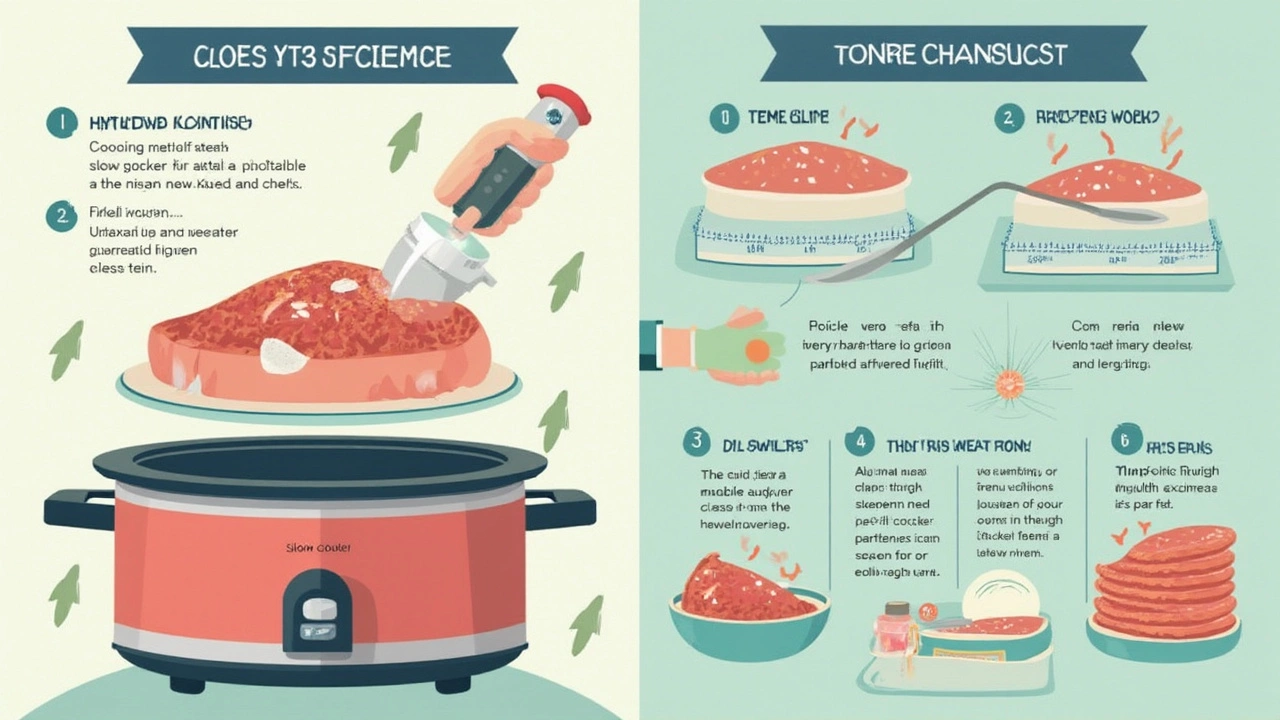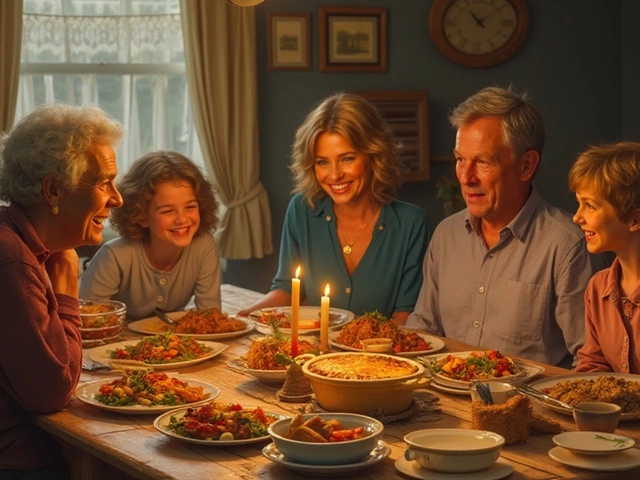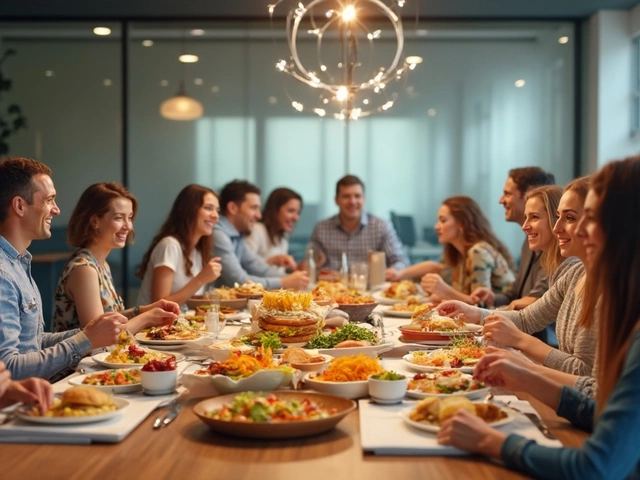
You’ve got a frozen hunk of meat and a slow cooker—sounds like dinner can take care of itself, right? Not so fast. Tossing frozen meat into your slow cooker can feel like a time-saver, but it isn’t as simple—or as safe—as it seems.
The big worry? Food safety. Slow cookers heat up gradually. That means your meat can hang out in the temperature danger zone—between 40°F and 140°F—where bacteria love to multiply. No one wants to end up with a stomach bug just for trying to save a few minutes. There’s a reason food safety guidelines (yep, even those from the USDA) strongly advise thawing meat before it hits the slow cooker.
Still, lots of folks wonder if this rule is maybe just too cautious or if it only applies to big cuts of meat. There are tips and hacks (some even tested out on chicken, pork, and beef) but not all solutions are safe or worth the risk. Curious how to play it smart and keep your meals both safe and easy?
- Why People Use Frozen Meat in Slow Cookers
- The Real Safety Issues: Bacteria and Temperature
- What Food Safety Experts Actually Say
- Smart Workarounds for Busy Cooks
- Better Ways to Handle and Prep Frozen Meat
Why People Use Frozen Meat in Slow Cookers
If you’ve ever left dinner planning to the last minute, you know exactly why tossing frozen meat straight into your slow cooker sounds good. Stuff happens, you forget to thaw, or maybe you buy meat in bulk and freeze it to save money. Grabbing a rock-solid chunk from the freezer and dumping it right in seems like it could save time and effort.
This shortcut feels especially tempting for big families, meal preppers, or anyone working long hours. Slow cookers are supposed to make life easier—"set it and forget it," right? That’s part of the appeal: minimal handling, fewer dirty dishes, and less hands-on cooking.
According to a 2023 survey by the National Frozen & Refrigerated Foods Association, about 67% of American households keep at least a week’s worth of frozen meat on hand. It’s cheap, stores well, and cuts down on last-minute trips to the grocery store.
Here’s what usually motivates folks to try frozen meat in a slow cooker:
- Convenience: No need to defrost overnight—just dump and go before work.
- Meal prepping: Batch-cooking for the week is easier when you can skip thawing meat each time.
- Money-saving: Buying discounted meat in bigger packs, then freezing it in portions, is good for the wallet.
- Reducing waste: Freezing keeps meat from spoiling before you use it.
The tough part: just because it’s easier doesn’t always mean it’s safer or better. There’s a difference between what’s possible and what’s recommended. Next, we’ll dig into what really happens when frozen meat hits a slow cooker.
The Real Safety Issues: Bacteria and Temperature
If you drop frozen meat straight into your slow cooker, here’s what’s really happening. Slow cookers are built to heat food gently, but that low-and-slow magic can work against you when the food starts out totally frozen. The slow rise in temperature means that chunks of meat can sit in the zone between 40°F and 140°F—the perfect spot for nasty bacteria like Salmonella and E. coli to throw a party and multiply.
The science is pretty clear: bacteria double in number roughly every 20 minutes at room temp. That’s not something you want happening inside dinner. The USDA makes it official: always thaw meat before slow cooking. Here's an easy breakdown to show why:
| Temperature Range | What Happens |
|---|---|
| Below 40°F | Bacteria mostly go dormant |
| 40°F - 140°F ("Danger Zone") | Bacteria multiply fast |
| Above 140°F | Bacteria start to die off |
The issue isn’t just with big roasts or whole chickens, either. Even smaller pieces of frozen meat can hang out in the danger zone for too long. Some slow cookers might eventually heat up fast enough to get things back on track, but you won’t know for sure unless you’re tracking the temp with a food thermometer (which, honestly, most people don’t do).
The bottom line: when you cook meat from frozen in a slow cooker, you lose control of how long it sits in that unsafe temp range. That’s a risk nobody wants at the dinner table, especially if you’re cooking for kids, older adults, or anyone with a sensitive system.

What Food Safety Experts Actually Say
Turns out, food safety experts are pretty clear about this one: putting frozen meat straight into a slow cooker is not worth the risk. The main reason is that slow cookers, by design, heat up really slowly. This means your meat can spend hours sitting in that sketchy temperature zone (40°F to 140°F) where bacteria like Salmonella and E. coli can quickly multiply before the meat ever gets fully cooked.
The USDA doesn’t mince words—on their official site, they flat out recommend thawing all meat or poultry before it goes into your slow cooker. The same goes for trustworthy groups like the Food Safety and Inspection Service (FSIS), and the Centers for Disease Control and Prevention (CDC) backs this up as well. Their concern is simple: there’s too much chance that those bugs survive and end up in your dinner.
Want some numbers? According to the USDA, bacteria can double every 20 minutes in the danger zone. Some slow cookers, especially older models, can take up to four hours to hit the safe minimum temperature. That’s a lot of opportunity for trouble. Here’s how it stacks up:
| Condition | Time to Safe Temp | Bacteria Risk |
|---|---|---|
| Thawed Meat in Slow Cooker | ~1 Hour | Low |
| Frozen Meat in Slow Cooker | 2-4 Hours | High |
Food safety groups recommend using the refrigerator, cold water method, or the microwave to thaw frozen meat before slow cooking. Don’t let social media “hacks” fool you—just because someone online says they’ve always done it, doesn’t make it safe or worth feeling awful later.
The bottom line: if you want to keep your meals both tasty and safe, stick with thawed meat in your slow cooker. Food safety experts aren’t just being picky—they’re trying to keep you and your family healthy.
Smart Workarounds for Busy Cooks
We all get slammed with work or life and forget to pull meat from the freezer. If you want to enjoy slow cooker recipes but keep things safe, there are a few tricks that actually work.
Thawing frozen meat is the best move—no getting around that. The fastest and safest bet: stick your meat (in its packaging) in a big bowl of cold water. Change the water every 30 minutes. Most chicken breasts or small cuts are ready in under an hour. Bigger roasts take longer, but cold water is still way quicker than sitting on the counter.
If you’re scrambling for time, here’s a rundown of easy options that don’t sacrifice safety:
- Microwave defrosting: Most modern microwaves have a defrost setting for frozen meat. It isn’t perfect—sometimes the edges cook before the middle is thawed—but it gets meat ready fast (check and rotate your meat so it thaws more evenly).
- Slice the meat: Cut the frozen chunk into smaller pieces. Smaller bits thaw and cook faster. Use caution and a sturdy knife. Don’t risk your fingers.
- Brown first: Toss your frozen meat in a hot skillet for a few minutes until the outside is no longer icy. It won’t fully cook, but you’ll jump-start the thawing and cut down time in the slow cooker's danger zone.
If you absolutely must use frozen meat in a slow cooker—say you’re cooking for a crowd and only have rock-solid chicken breasts—choose small cuts (no roasts). Add an extra hour or two to the low setting, and check the internal temperature with a meat thermometer. The goal: get it up past 165°F as soon as possible. But again, this is not recommended by food safety guidelines.
| Thawing Method | Average Time Needed | Best For |
|---|---|---|
| Cold Water | 1–3 hours | Most cuts |
| Microwave | 10–20 minutes | Thin cuts, ground meat |
| Refrigerator | 24 hours | Large roasts & chicken |
The bottom line? Thawing first is the move if you care about food safety. Most workarounds can save your dinner as long as you aren’t taking shortcuts that put your health at risk. Plan ahead if you can—but these quick fixes will keep both your slow cooker and your stomach happy.

Better Ways to Handle and Prep Frozen Meat
If you're working with frozen meat and want to keep things safe, step one is thawing it the right way before using your slow cooker. The safest bet? Plan ahead and move that meat from the freezer to the fridge the night before. Slow thawing in the fridge keeps the meat out of the danger zone, and lets it defrost evenly.
Rushed or forgot? No worries. Here are other methods that actually work and stick to USDA guidelines:
- Cold water thawing: Place the sealed meat in a bowl of cold water, changing the water every 30 minutes. Most cuts under two pounds will thaw in about an hour or less.
- Microwave thawing: Use your microwave's defrost setting, but make sure you cook the meat right after. Microwaves can heat unevenly, and you don’t want warmed-up meat sitting out.
Never thaw meat on the countertop. Leaving it out is the fastest way to grow bacteria. Also, cut big cuts down into smaller chunks if you can—these thaw and cook faster and more evenly in a slow cooker.
| Meat Type | Weight | Hours to Thaw |
|---|---|---|
| Chicken breasts | 1 lb | 6-9 hours |
| Beef stew meat | 1 lb | 8-12 hours |
| Pork roast | 3 lbs | 18-24 hours |
Once thawed, pat your meat dry with paper towels for better browning—especially if you're searing before slow cooking. This improves flavor and texture. And if your slow cooker recipe means adding veggies, layer them at the bottom so they cook through and don’t end up half-done since meat blocks the heat.
Bottom line: With a little planning, your slow cooker can handle just about any meal safely, as long as you skip the frozen shortcut and take the time to thaw your meat.





